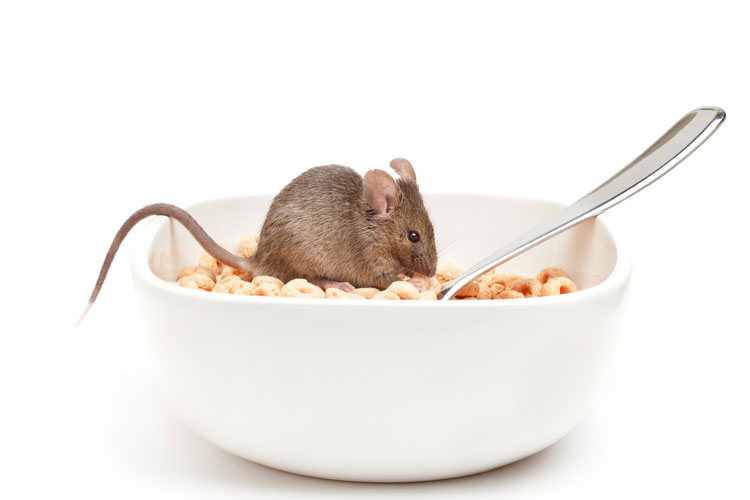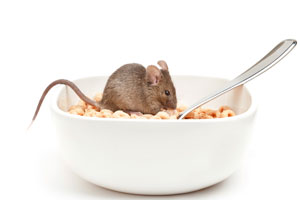Scientists tap the smarts of mice, capture problem-solving in action
Findings support active learning and critical thinking in schools and workplaces

March 7, 2016

Mice who learned by trial and error during Cheerio-hunting tasks show dramatic frontal brain rewiring. (iStockphoto)
UC Berkeley scientists have captured unique images of problem-solving in action by tapping into the minds of mice. The study shows rapid rewiring in the rodents’ frontal brains after they learn by trial and error.
Using advanced microscopy techniques, researchers found that when mice used new strategies to find hidden treats during a foraging task, they showed a dramatic resculpting of their frontal lobes.
“We are excited because these are the first pictures of live rewiring in the brain at the synaptic level that capture a trace of this higher-order form of learning,” said study senior author Linda Wilbrecht, an associate professor of psychology and neuroscience at UC Berkeley.
The findings, published today in the journal Nature Communications, provide compelling evidence in favor of “active learning,” an approach that promotes critical thinking and problem-solving in schools and workplaces.
While similar time-lapse movies have documented brain restructuring during motor, sensory and fear-conditioning tasks, “Visual evidence has been lacking for the more complex, cognitive, strategy-based trial-and-error learning that helps us grow each day at school and at work,” Wilbrecht said.
“These data push us towards greater recognition of how multiple dimensions of learning, particularly active learning, may be sculpting our brains,” she added.
Wilbrecht and study lead author Carolyn Johnson, a postdoctoral researcher at Harvard University, sought to investigate how rules, defined as “learned relationships between cues, actions and outcomes,” are encoded in the brain.
“We know rules are in there somewhere, and we wanted to get a glimpse of how they might be established and stored in the neural wiring,” Wilbrecht said.
The researchers focused on the “orbitofrontal cortex,” the brain region highlighted in the famous case of Phineas Gage, an American railroad construction foreman who survived an accident in which an iron rod shot through his frontal lobes.
Before the injury, Gage was known as a polite man who followed rules. After his accident, he became a rule breaker and nonconformist.
For the study, UC Berkeley researchers tracked daily changes in the synapses of the orbital frontal cortices of mice as they learned new rules. They did so by having mice explore various strategies to find Cheerios that were hidden in bowls of wood shavings scented with either licorice, clove, thyme or fruit. The rules for how to find the Cheerios changed on a daily basis.
For example, on the first day of the experiment, the mice learned that the scent of licorice would lead them to a Cheerio hidden at the bottom of a bowl, but they received no other clues.
“They had to discover the rule that led them to a Cheerio using trial and error,” Wilbrecht said.
Mice carried out the foraging task in the morning, and brain changes were recorded in the afternoon. Using a technology known as 2-photon laser scanning microscopy, researchers took pictures of the growth and pruning in the brain circuitry of long-range axons, conduits for electrical signals that connect neurons in the frontal lobe’s executive centers.
The mice who puzzled out the new rules on a daily basis showed dramatic changes in the wiring that broadcasts information from the orbitofrontal cortex.
“Importantly, these changes scaled with each animal’s trial-and-error strategy and experience, suggesting they reflect each animal’s intellectual growth,” Wilbrecht said.
By contrast, mice who received Cheerios freely without having to navigate rules showed no uptick in brain circuit remodeling.
UC Berkeley researchers Hannah Peckler and Lung-Hao Tai are co-authors of the study.
SEE ALSO: Intellectual pursuits may buffer the brain against addiction